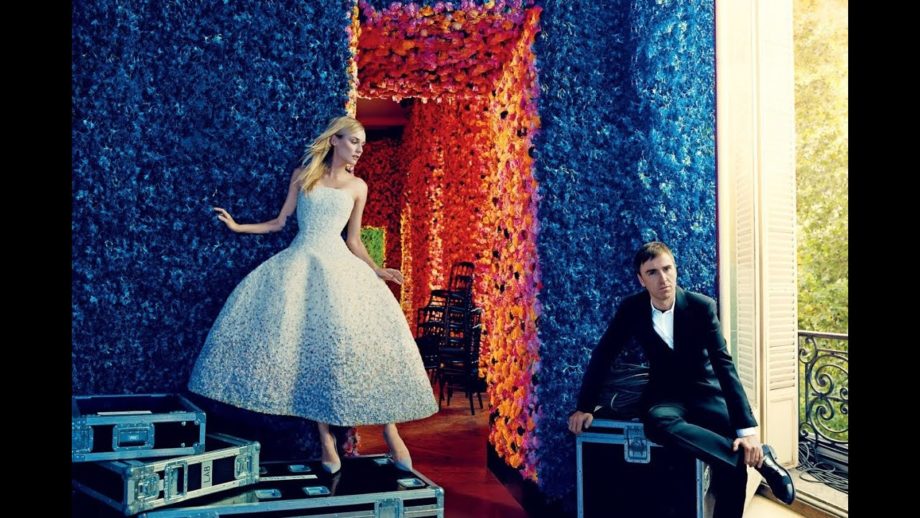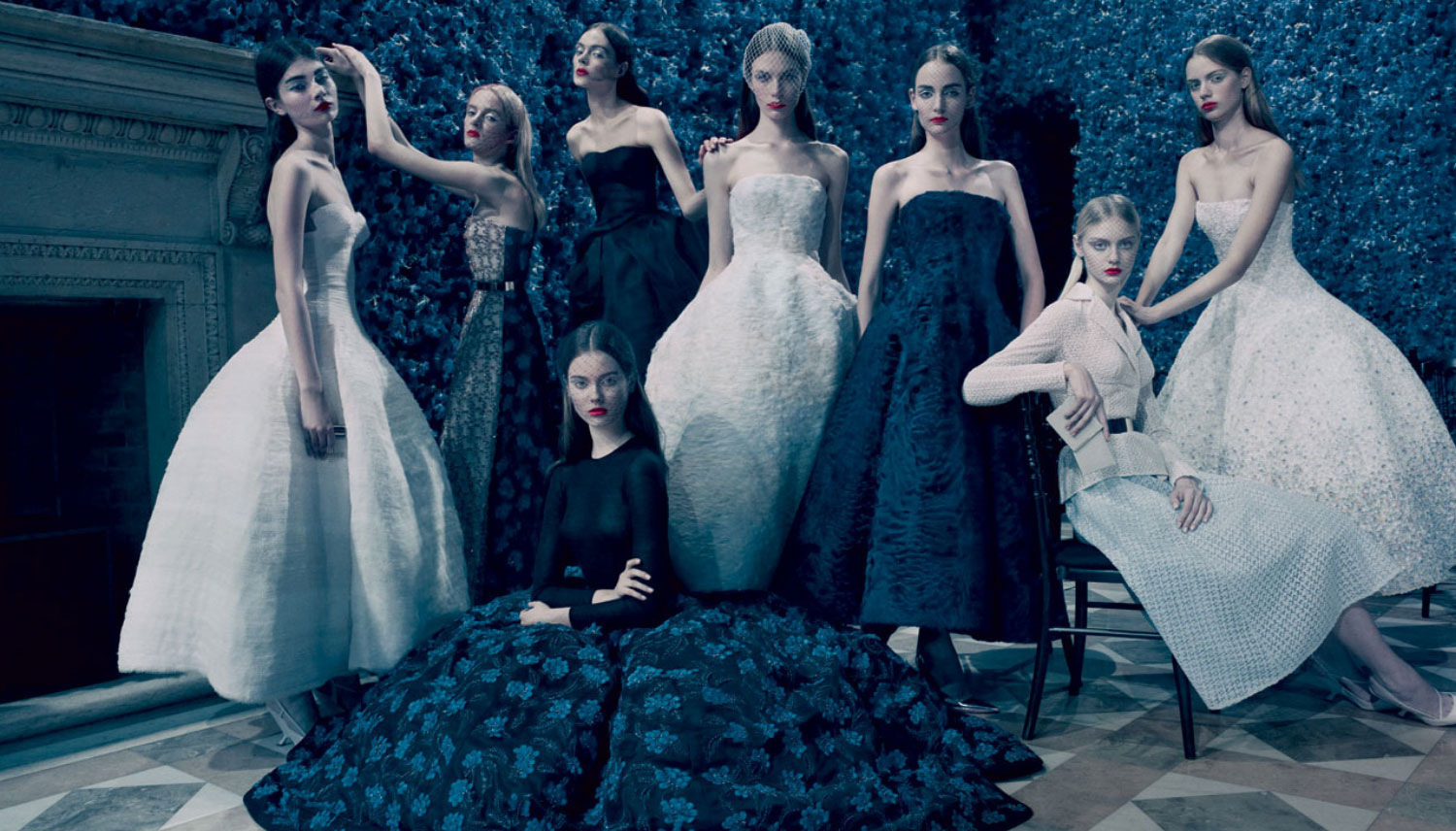Of all the couture houses in Paris, the plum is Christian Dior. Perhaps it’s the symbolism, the way the house blossomed from nothing in 1947, in the wake of World War II. Or that its debut line, Corolle, reimagined women like flowers and suddenly the Western world was a garden of bell shapes and full skirts, with women loving the way they looked and felt in Dior’s deep curves formed from yards and yards of silk.
It was a profound moment that lasted 10 years—a decade, then, in which Dior was the king of fashion and his business empire accounted for a healthy percentage of France’s export revenue. Since Dior’s death, in 1957, the appointment of every successive house designer has seemed an affair of state—1957: Yves Saint Laurent; 1960: Marc Bohan; 1989: Gianfranco Ferré; 1996: John Galliano; 2012: Raf Simons.
The hardest thing to realize in fashion is that the future lies in the past. The second hardest thing is to forget the past. That precise turn of mind is what Raf Simons showed in his first collection for Dior, Fall/Winter Haute Couture show. In almost every one of the 54 outfits, in the purposeful use of craft, Mr Simons made a link to the modernity and energy that Christian Dior brought to fashion right after World War II. Those themes included sculptural lines, ravishing colour, a preference for pockets, a sense of chic femininity but also ease. Mr Simons then put those ideas through his own filter.

It is said that Monsieur Dior could hear an apple ripen on a tree. Would he ever have guessed that a man who began his career in industrial design would take over the garden of earthly delights that is Dior? Simons left interior design because working alone didn’t suit him—he preferred the esprit de corps of collaboration. In 1995 he began designing men’s wear in his native Belgium, and in 2005 he was hired to re-invigorate Jil Sander. Command, control, process, thought. His shows became famous for their pin-drop quiet and the soft, rapturous rain of cameras clicking. Forget nostalgia, vintage sighs, and postmodern appropriation.
Simons is a modernist with a love of the new—and the cultural map to find it. “I never would make direct references,” he has said. No. He produces beautiful clothes that have never been seen before. And now, at 44, he has Dior, along with its imposing archive of archetypes. “I think he was the perfect choice,” Mr Arnault, visibly pleased, said after the show. “He’s full of ideas, and he’s also very easy to work with.” He laughed and added, “I know I can always call him on the phone, and you know that’s not always the case with some designers.”
His debut on July 2 took place throughout five rooms of an hôtel particulier each lined in a floor-to-ceiling tapestry of fresh flowers—roses, delphiniums, peonies, and orchids – that had taken 150 workers to assemble. “I wanted it to be linked to the codes of Christian Dior — but to make it dynamic, modern, energetic,” Mr Simons, 44, said after the couture show to explain his own historic/modern approach. The blooms were a homage to Mr Dior’s “Flower Woman” and passion for gardens. But glowing, growing from within Simons’s curvilinear gowns and jackets were the rounded volumes of Corolle—so light, so pure, so full of the future.
CREDIT
Source:
Vanity Fair
Holding Image:
Paolo Roversi x Vanity Fair

